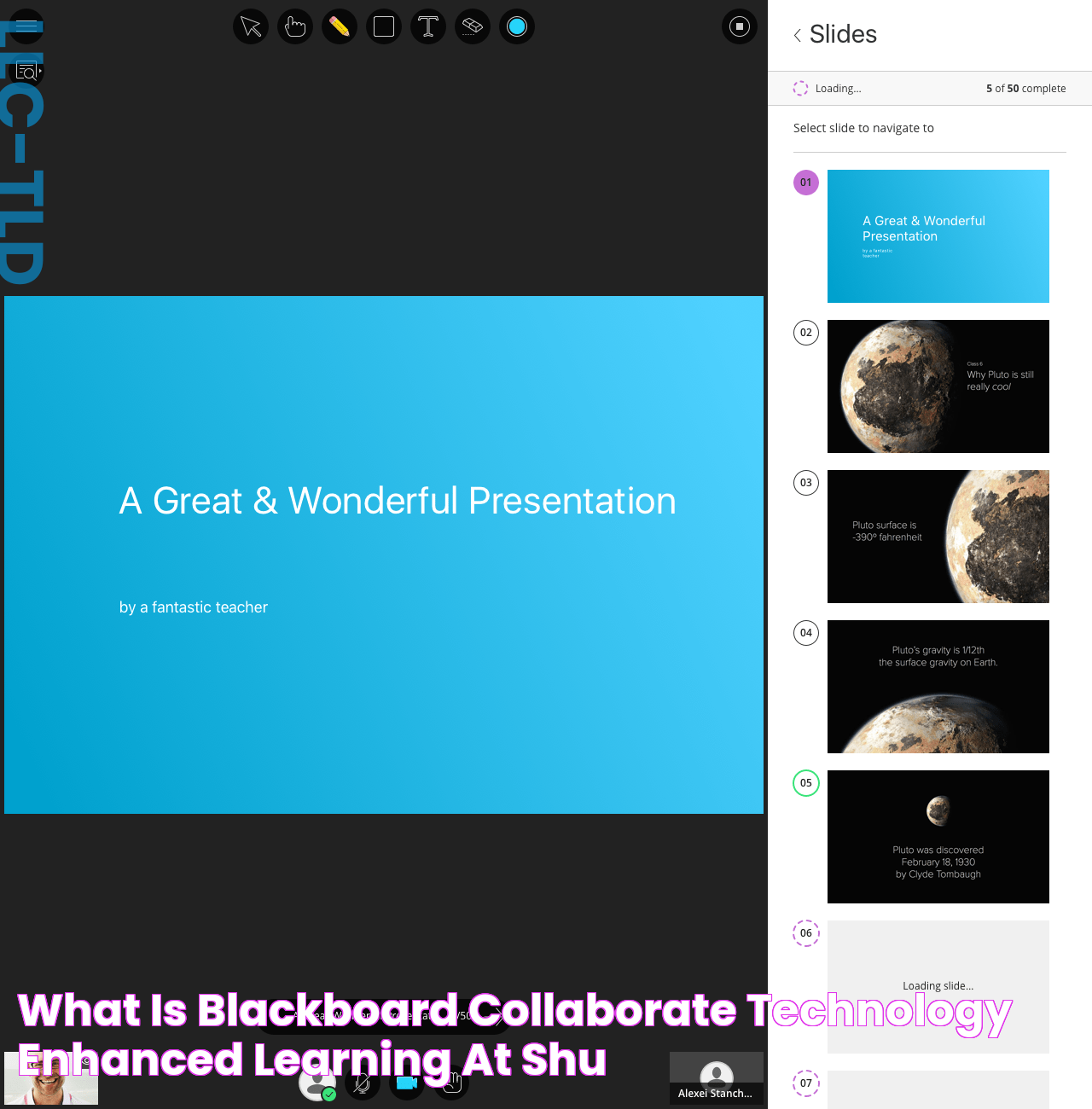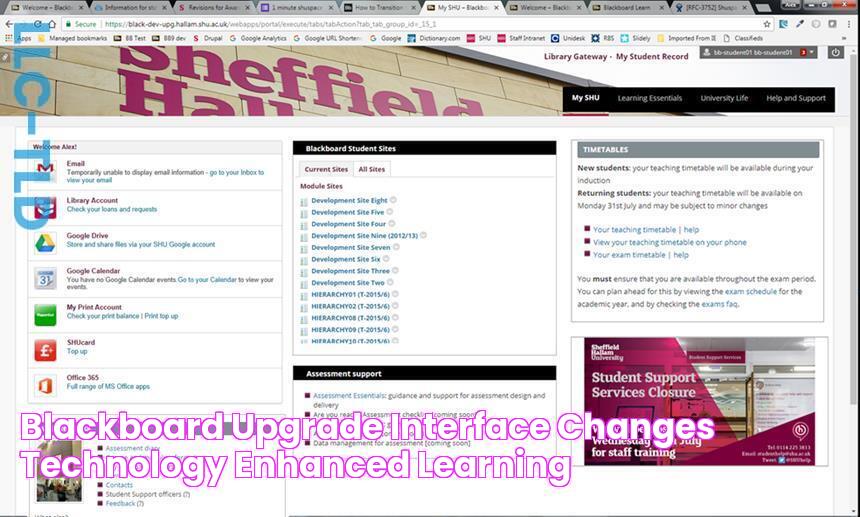Learn Effectively With Shu Blackboard: Your One-Stop Solution For Online Learning
The term "shu blackboard" refers to a type of writing board traditionally used in East Asia for educational purposes. It consists of a wooden frame with a thin layer of black paint or lacquer applied to the surface, creating a smooth and durable writing surface.
Shu blackboards are particularly notable for their use in calligraphy practice, where students can improve their brushwork and character formation by writing on the smooth surface.
Additionally, they are commonly employed in classrooms to facilitate teaching and student engagement. Teachers can write or draw on the blackboard to illustrate concepts, solve problems, or present information in a visual manner.
Furthermore, they are used in various settings such as offices, libraries, and homes for writing notes, drawing diagrams, or keeping track of information.
The use of shu blackboards has played a significant role in the education systems of East Asian countries for centuries. They provide a versatile and cost-effective tool for writing, teaching, and learning, fostering the development of literacy and critical thinking skills.
While modern technology has introduced digital whiteboards and interactive displays in many educational settings, shu blackboards continue to hold cultural and practical value in many parts of East Asia.
They serve as a reminder of the traditional methods of education and the importance of handwriting and calligraphy in the region's cultural heritage.
Read also:Uncover Taylor Swifts Towering Height All The Details
shu blackboard
A shu blackboard, also known as a Chinese writing board, is a traditional writing surface used in East Asia, particularly for calligraphy and education. The key aspects of a shu blackboard include:
- Surface: Smooth and durable, made of wood with black paint or lacquer.
- Function: Writing, drawing, and teaching.
- Material: Traditionally made of wood, but now also available in other materials.
- Education: Essential tool for calligraphy practice and classroom teaching.
- Culture: Holds cultural significance and represents traditional methods of education.
- Adaptability: Used in various settings, including homes, offices, and libraries.
Shu blackboards offer numerous benefits, including their affordability, durability, and versatility. They provide a smooth and consistent writing surface that allows for precise brushwork and character formation. In classrooms, they facilitate teacher-student interaction and visual learning. Beyond education, shu blackboards are also used for note-taking, drawing, and keeping track of information in various settings.
The use of shu blackboards has evolved over time, with the introduction of digital whiteboards and interactive displays. However, they continue to be an integral part of education and cultural practices in many East Asian countries. They serve as a reminder of the importance of traditional methods of writing and teaching, while also adapting to modern needs and contexts.
1. Surface
The surface of a shu blackboard is a defining characteristic that contributes to its functionality and cultural significance.
- Smooth and Durable: The smooth surface of the blackboard allows for precise and fluid writing, making it suitable for calligraphy practice and precise character formation. The lacquer or paint provides durability, ensuring that the writing surface can withstand repeated use and cleaning.
- Material: Traditionally, shu blackboards are made of wood, which provides a sturdy and reliable base for the writing surface. However, modern variations may also use other materials, such as metal or plastic.
- Black Color: The black color of the surface provides a high-contrast background for writing and drawing, making the characters or images stand out clearly. This is particularly important in calligraphy, where the contrast helps to showcase the brushstrokes and nuances of the characters.
Overall, the surface of a shu blackboard is carefully crafted to meet the specific needs of calligraphy and writing education. Its smooth, durable, and black characteristics combine to create a versatile and effective writing tool that has been an essential part of East Asian education and cultural practices for centuries.
2. Function
The shu blackboard serves various functions, including writing, drawing, and teaching. These functions are closely intertwined and contribute to the blackboard's importance in East Asian education and cultural practices.
Read also:The Ultimate Guide To Apponfly A Powerful App Testing Tool
- Writing:
Shu blackboards provide an ideal surface for writing, particularly calligraphy. The smooth surface allows for precise brushstrokes and character formation, making it a valuable tool for practicing and mastering the art of calligraphy.
- Drawing:
Beyond writing, shu blackboards can also be used for drawing. The black surface provides a suitable backdrop for sketching, creating diagrams, or illustrating concepts. This makes them versatile tools for both educational and creative purposes.
- Teaching:
In educational settings, shu blackboards play a crucial role in teaching. Teachers use them to write or draw on the surface, presenting information, solving problems, or facilitating discussions. The visual nature of the blackboard allows students to follow along and engage with the lesson more effectively.
Overall, the functions of writing, drawing, and teaching are deeply connected to the design and use of shu blackboards. They embody the versatility and practicality of this traditional writing tool, making it an essential part of East Asian education and cultural heritage.
3. Material
The material used in the construction of shu blackboards has evolved over time, impacting their durability, portability, and aesthetic appeal. Traditionally, shu blackboards were made of wood, prized for its strength, stability, and ability to provide a smooth writing surface. Wooden shu blackboards are often handcrafted by skilled artisans, ensuring high quality and attention to detail.
While wood remains a popular choice for shu blackboards, modern materials such as metal, plastic, and even glass have also been introduced. Metal shu blackboards offer enhanced durability and resistance to wear and tear, making them suitable for heavy use in educational settings. Plastic shu blackboards are lightweight and portable,, making them ideal for use in classrooms with limited space or for students who need to transport their writing boards. Glass shu blackboards provide a sleek and modern aesthetic, while also offering a smooth and durable writing surface.
The choice of material for a shu blackboard depends on factors such as intended use, durability requirements, and budget. Traditional wooden shu blackboards continue to be valued for their craftsmanship and cultural significance, while modern materials offer practical advantages such as durability, portability, and affordability. Ultimately, the material used in the construction of a shu blackboard contributes to its overall functionality and suitability for different purposes.
4. Education
The shu blackboard holds a prominent place in educational settings, serving as an essential tool for both calligraphy practice and classroom teaching. Its unique characteristics and versatility make it an indispensable resource for educators and students alike.
- Calligraphy Practice:
Shu blackboards are a cornerstone of calligraphy practice in East Asian cultures. The smooth, durable surface provides an ideal base for practicing brushstrokes and developing muscle memory for character formation. The black background offers high contrast, making it easier to visualize and correct strokes. - Classroom Teaching:
In classrooms, shu blackboards are widely used for teaching a variety of subjects. Teachers can write or draw on the blackboard to illustrate concepts, present information, or facilitate discussions. The visual nature of the blackboard helps students to engage with the lesson, follow along with explanations, and retain information more effectively. - Visual Aids:
Shu blackboards serve as versatile visual aids for teachers. They can be used to create diagrams, charts, and other graphical representations of complex concepts. This visual element enhances understanding and makes learning more interactive. - Collaboration and Interaction:
Shu blackboards foster collaboration and interaction in the classroom. Students can use the blackboard to share their ideas, solve problems together, or present their work to the class. This encourages active participation and promotes a dynamic learning environment.
Overall, the shu blackboard's role in education extends beyond its function as a writing surface. It is an essential tool that supports calligraphy practice, enhances classroom teaching, and promotes collaboration and engagement among students. Its enduring presence in educational settings underscores its value as a powerful resource for fostering learning and cultural preservation.
5. Culture
The shu blackboard is deeply rooted in East Asian culture, embodying traditional methods of education and holding significant cultural value.
- Symbol of Scholarship and Knowledge:
Shu blackboards are revered as symbols of scholarship and knowledge in East Asian cultures. They represent the pursuit of education and the transmission of knowledge from one generation to the next.
- Calligraphy and Art:
Shu blackboards are closely associated with the art of calligraphy, which is highly valued in East Asia. The practice of calligraphy on shu blackboards is not only a form of writing but also a respected art form.
- Preservation of Cultural Heritage:
Shu blackboards play a crucial role in preserving cultural heritage. They are used in traditional schools and cultural institutions to teach calligraphy and other traditional arts, ensuring the continuity of these practices.
- Educational Significance:
Shu blackboards are central to traditional educational methods in East Asia. They provide a versatile surface for teachers to write, draw, and illustrate concepts, promoting visual learning and engagement.
In conclusion, the shu blackboard holds immense cultural significance in East Asia, representing traditional methods of education and serving as a symbol of scholarship, art, cultural preservation, and educational excellence.
6. Adaptability
The adaptability of the shu blackboard is a testament to its versatility and practicality. Its use extends beyond traditional educational settings, finding applications in various environments such as homes, offices, and libraries.
In homes, shu blackboards provide a convenient and portable surface for writing notes, jotting down ideas, or creating to-do lists. Their smooth surface allows for easy wiping and reuse, making them an efficient tool for everyday tasks.
In offices, shu blackboards serve as effective communication and brainstorming tools. Teams can use them to capture ideas, sketch out concepts, or present information during meetings. The visual nature of the blackboard fosters collaboration and encourages active participation.
Libraries often utilize shu blackboards for displaying announcements, showcasing new arrivals, or promoting upcoming events. Their large surface area and high visibility make them an effective way to communicate with patrons.
The adaptability of the shu blackboard highlights its enduring relevance in modern contexts. Its ability to seamlessly integrate into different settings underscores its timeless design and practical value.
Frequently Asked Questions about Shu Blackboards
This section addresses common questions and misconceptions surrounding shu blackboards, providing informative answers to enhance understanding and appreciation of these traditional writing tools.
Question 1: What are the primary uses of shu blackboards?
Answer: Shu blackboards serve a variety of purposes, including practicing calligraphy, teaching in classrooms, creating visual aids, and fostering collaboration among students.
Question 2: Why are shu blackboards still relevant in the modern era?
Answer: Despite the advent of digital technologies, shu blackboards remain valuable due to their adaptability, cost-effectiveness, and ability to enhance visual learning and engagement.
Question 3: What is the cultural significance of shu blackboards?
Answer: Shu blackboards hold deep cultural significance in East Asia, symbolizing scholarship, preserving traditional arts, and representing traditional methods of education.
Question 4: Are shu blackboards only used in educational settings?
Answer: No, shu blackboards are versatile tools with applications in various settings, including homes, offices, and libraries.
Question 5: What materials are shu blackboards traditionally made of?
Answer: Traditionally, shu blackboards are crafted from wood, providing a durable and stable surface for writing and drawing.
Question 6: What are the advantages of using shu blackboards for calligraphy practice?
Answer: Shu blackboards offer a smooth and surface that allows for precise brushstrokes and facilitates the development of muscle memory for character formation.
In summary, shu blackboards are versatile and culturally significant writing tools that continue to find applications in various settings. Their adaptability, durability, and ability to enhance visual learning make them valuable resources for education, art, and everyday use.
Moving forward, let's delve into the fascinating history of shu blackboards and their evolution over time.
Tips for Using Shu Blackboards
Shu blackboards offer a unique and versatile writing surface for various purposes. Here are a few tips to optimize their use:
Tip 1: Choose the Right Chalk
The type of chalk used can significantly impact the writing experience. Opt for high-quality chalk specifically designed for shu blackboards, as it provides better adhesion and visibility.
Tip 2: Maintain a Clean Surface
Regularly clean the blackboard surface with a damp cloth to remove any residual chalk dust or debris. This ensures a smooth writing surface and prevents smudging.
Tip 3: Use Different Colors for Emphasis
Incorporate colored chalk to highlight important points or differentiate between concepts. This visual cue enhances readability and makes the content more engaging.
Tip 4: Practice Regularly
Consistent practice is essential for mastering the art of writing on a shu blackboard. Dedicate time to practicing basic strokes and character formation to improve your technique.
Tip 5: Explore Creative Uses
Shu blackboards are not limited to traditional writing. Experiment with creative uses such as drawing, sketching, or creating visual representations of complex ideas.
Tip 6: Store Properly
To preserve the longevity of your shu blackboard, store it in a dry and well-ventilated area when not in use. This prevents moisture damage and ensures its durability.
Tip 7: Consider Chalkboard Paint
If a traditional shu blackboard is not readily available, consider using chalkboard paint to transform any surface into a writable space. This provides a versatile and cost-effective alternative.
By following these tips, you can optimize the use of shu blackboards, enhancing your writing, teaching, or creative endeavors.
Remember, shu blackboards are a timeless tool that fosters learning, creativity, and cultural preservation. Embrace their versatility and let them inspire your pursuits.
Conclusion
The shu blackboard, with its distinctive black surface and versatile functionality, holds a prominent place in East Asian culture and education. Its smooth surface facilitates precise writing and drawing, making it an ideal tool for calligraphy practice and classroom teaching. Beyond its traditional uses, the shu blackboard has adapted to modern contexts, finding applications in homes, offices, and libraries. Its durability, adaptability, and affordability make it a valuable resource for a wide range of purposes.
As we continue to embrace technological advancements, it is essential to recognize the enduring significance of the shu blackboard. It represents a tangible connection to our cultural heritage and serves as a reminder of the importance of traditional methods of learning and expression. By preserving and promoting the use of shu blackboards, we not only safeguard a piece of history but also foster creativity, collaboration, and the pursuit of knowledge.
Brilliant Inventor Sarah Boone Transforms The World With Her Innovations
The Ultimate Guide To Pronouncing "Kolache": A Comprehensive Tutorial
Tamara Mellon Gner - Fashion Icon And Entrepreneur


